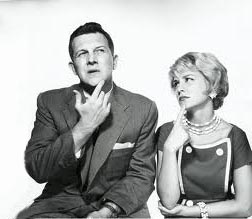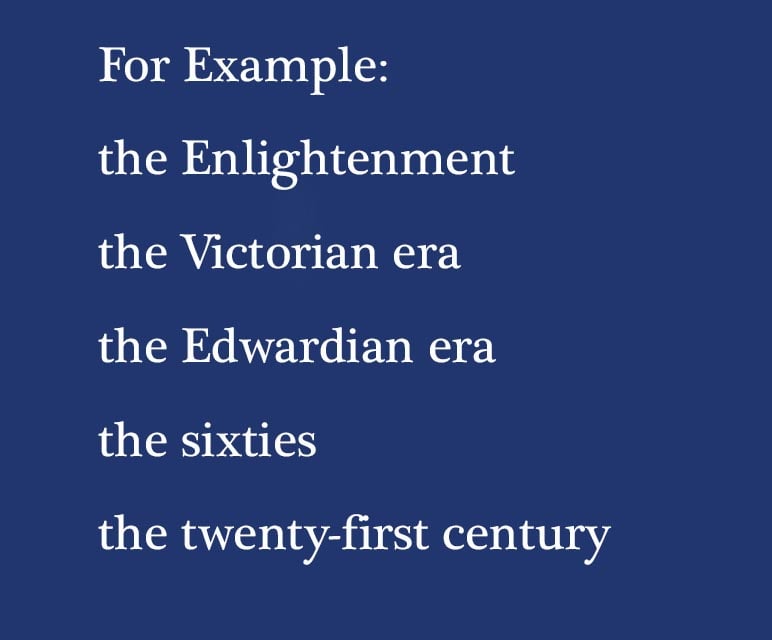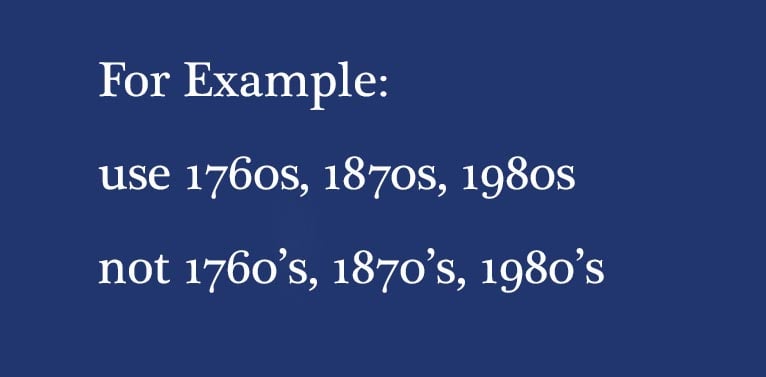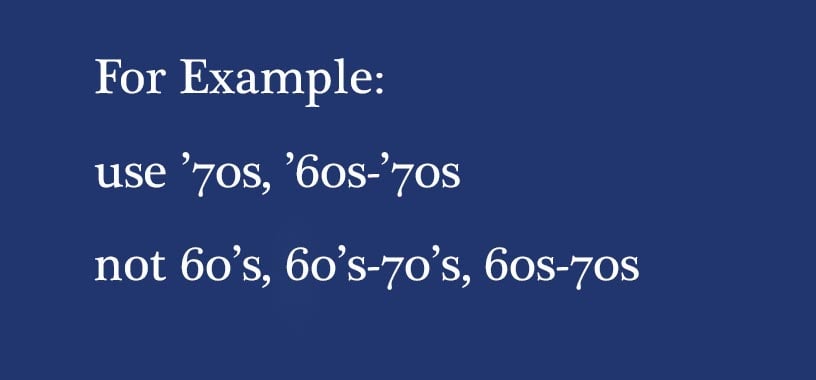Insider Tips: The Correct Way to Write an Era
If you write about vintage fashion in any capacity - be it blogger, hobbyist, historian or seller - you should want to use every weapon in your arsenal to make your content (what you’re writing or selling) accessible. This means being searchable in the ol’ Google or on that vintage fashion marketplace. It means writing your blogs, or creating descriptions of the clothes you sell, as accurately as possible. You have to keep in mind that while you might know what you’re talking about or trying to sell, the people you want to reach don’t. So when you write your articles or list your items for sale, the best way to make sure you’re seen is to be clear and concise about the eras you’re in. And we’re here to help you do that.

Notice in the latter example, the word “eighties” was not capitalized. Why? Because it is the name of a decade. As a general rule, decades and centuries remain lowercase, whereas historical periods and eras are usually capitalized. This is because in the main, descriptive terms are not capitalized and proper nouns are.


One more thing about an apostrophe - there is a correct place to use it, too, but that correct place is when you want to abbreviate a decade or an era. In this instance it is used at the front of the abbreviation of a decade, not at its end. It is just as incorrect to neglect to use an apostrophe as it is to use it in the wrong place. Let’s say you’re talking about the nineteen seventies and you wish to abbreviate it. This is how you’d do that:

Oh, and one last word about the apostrophe. Many web pages don't show the difference between an apostrophe and a single opening quotation mark. The mark displays as just a straight up-and-down mark either way. But the difference will matter if you plan to publish your writing in newsprint or if you plan to create a sign.
Hopefully the next time you write anything about vintage fashion - be it a historical examination or a listing for your next vintage piece - this quick little FAQ will help you to do so more confidently. But if you’re still unsure or have a few general concerns, head on down to the bottom of the page and you’ll find plenty of sources you can investigate further.
Patricia Browning received her archivist degree in Information Management & Preservation from the University of Glasgow. Her lifelong fascination with research saturates nearly every aspect of her life. These days, when she's not nose-deep researching vintage fashion labels, she can be found doing geneology or working on her pet project, David Tennant's early theatre career in Scotland.

Sources:
"How to Write the Decade Correctly." (8 June 2021). The Editor's Manual. Neha Srivastava Karne, 2019-2022. Retrieved 8 Feb 2022.
McGill, Molly. "How to Write Decades Properly and Impress Your Friends." warp+weft. 2022. Retrieved 8 Feb 2022.
Melissa. "Writing Decades." (20 February 2019). Grammar Planet Headquarters. grammarplanethq.com. Retrieved 8 Feb 2022.
Nichol, Mark. "How Should You Refer to a Cultural Era?" Daily Writing Tips. Dailywritingtips.com, 2007-2021. Retrieved 8 Feb 2022.
Reust, Frank. "Shortened version of a year requires an apostrophe." (26 April 2012). The St. Louis Post-Dispatch [St. Louis, MO]. stltoday.com, 2022. Retrieved 8 Feb 2022.
"Rules For Capitalization." (14 August 2021). The Editor's Manual. Neha Srivastava Karne, 2019-2022. Retrieved 8 Feb 2022.
